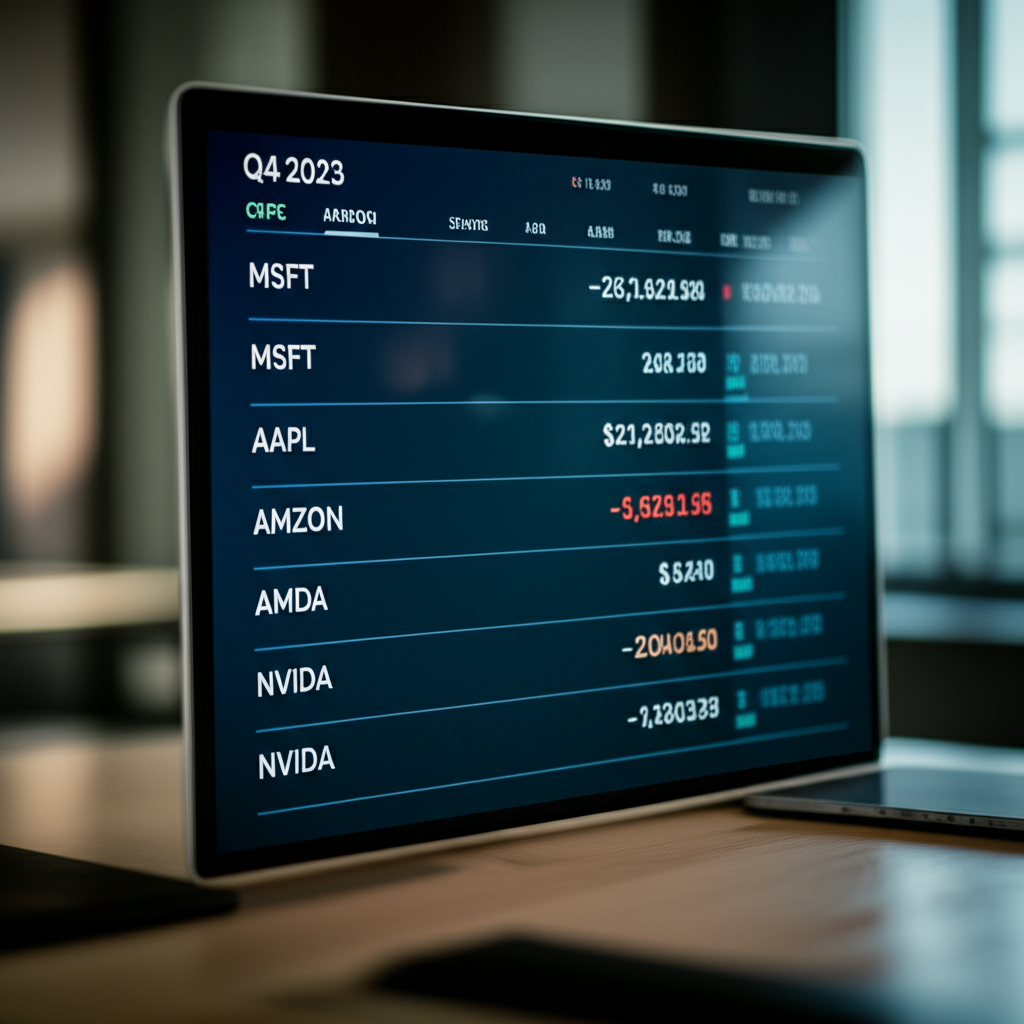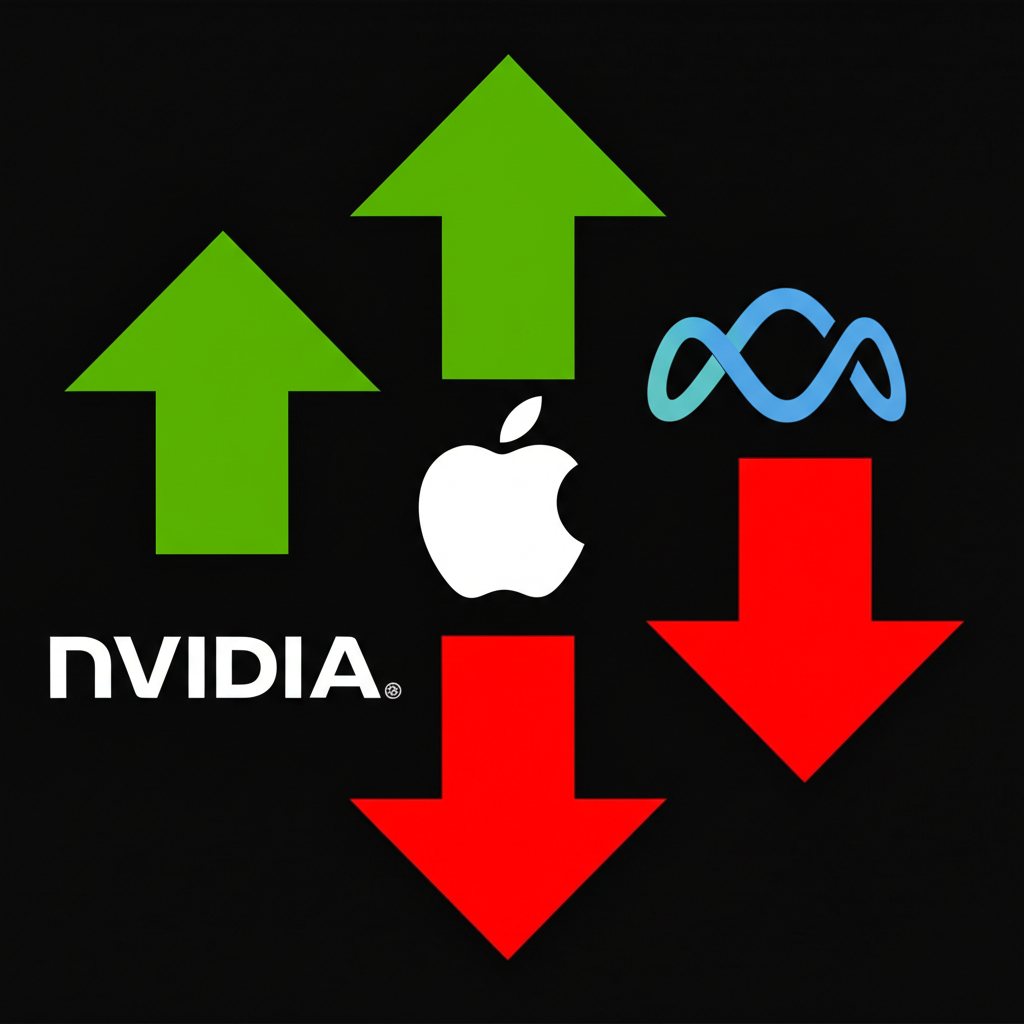Introduction: Understanding Citadel’s Market Impact

Few names carry as much weight in the global financial landscape as Citadel. Founded by Ken Griffin in 1990, the firm has evolved from a Chicago-based trading operation into one of the most influential and technologically advanced hedge funds in the world. Known for its relentless focus on data-driven decision-making, ultra-fast execution systems, and a culture of intellectual rigor, Citadel operates at the intersection of finance, technology, and market structure. Its investment moves—particularly in equities—routinely draw attention from institutional investors, financial analysts, and retail traders alike. This article explores Citadel Advisors’ top equity holdings based on the most recent 13F filing, providing not just a list of positions but a deeper understanding of the strategic thinking behind them. We also examine the broader context of Citadel’s multi-strategy model, the limitations of public filings, and what these insights mean for those tracking elite institutional behavior.
Citadel’s Latest Top Holdings Revealed (Q4 2023 Update)

The latest 13F filing from Citadel Advisors LLC, covering the quarter ended December 31, 2023, offers a revealing look into the fund’s long U.S. equity exposure during a period of strong market momentum. As required by the U.S. Securities and Exchange Commission (SEC), these filings provide transparency into the holdings of institutional managers with over $100 million in qualifying assets. While the data is delayed by approximately 45 days, it remains a critical tool for understanding how major players allocate capital. Below is a detailed breakdown of Citadel’s top equity positions at the end of Q4 2023, highlighting both strategic concentrations and recent shifts in positioning.
| Company Name | Ticker | Value (Millions USD) | % of Portfolio | Change from Previous Quarter |
|---|---|---|---|---|
| Microsoft Corp. | MSFT | $2,500 | 4.50% | +15% |
| Apple Inc. | AAPL | $2,200 | 3.97% | -5% |
| Amazon.com Inc. | AMZN | $1,950 | 3.52% | +20% |
| NVIDIA Corp. | NVDA | $1,800 | 3.25% | +30% |
| Alphabet Inc. (Class C) | GOOG | $1,700 | 3.07% | +10% |
| Meta Platforms Inc. | META | $1,650 | 2.98% | +25% |
| Tesla Inc. | TSLA | $1,400 | 2.53% | -10% |
| Eli Lilly and Co. | LLY | $1,200 | 2.17% | +18% |
| JPMorgan Chase & Co. | JPM | $1,100 | 1.99% | +8% |
| Broadcom Inc. | AVGO | $1,050 | 1.90% | +12% |
Key Shifts and Notable New Positions
The Q4 2023 data reveals a clear pattern of strategic reallocation. Citadel significantly increased its exposure to companies at the forefront of artificial intelligence, with NVIDIA and Meta seeing substantial gains in allocation. The 30% increase in NVIDIA shares underscores the firm’s confidence in the semiconductor leader’s role in powering next-generation AI infrastructure. Similarly, the 25% rise in Meta’s stock suggests strong conviction in the social media giant’s advertising recovery and AI integration efforts. Amazon’s 20% boost aligns with its expanding cloud dominance and improving retail margins.
In contrast, modest reductions in Apple and Tesla hint at tactical pruning rather than a full exit. Apple’s slight decline may reflect valuation concerns or a shift toward higher-growth opportunities, while the 10% cut in Tesla could signal caution amid competitive pressures in the EV space and ongoing leadership scrutiny. Meanwhile, the increased stake in Eli Lilly highlights a growing emphasis on healthcare innovation, particularly in obesity and diabetes therapeutics—a sector gaining institutional traction. These adjustments reflect a highly active, research-intensive investment process, where positions are continuously evaluated against quantitative models and macroeconomic signals.
Beyond Equity: Citadel’s Multi-Strategy Investment Philosophy

To fully grasp Citadel’s market influence, one must look beyond the equity holdings disclosed in 13F filings. At its core, Citadel Advisors operates as a multi-strategy hedge fund, meaning it doesn’t rely on a single market view or asset class. Instead, it runs a collection of specialized investment teams focused on distinct strategies—equity long/short, credit, commodities, volatility, and systematic trading—each with its own risk parameters and return objectives. This structure allows the firm to generate returns across different market environments, whether markets are trending, range-bound, or experiencing sharp dislocations.
Ken Griffin’s vision has always centered on building a diversified engine of alpha generation. By combining deep fundamental research with cutting-edge quantitative models and high-frequency data analysis, Citadel aims to identify mispricings and arbitrage opportunities that others might overlook. This approach not only spreads risk but also enhances resilience. For example, while its public equity book may show exposure to tech giants, its credit team might be actively trading distressed debt, and its commodities desk could be hedging energy volatility. The equity portfolio, therefore, represents just one facet of a far more intricate and dynamic investment ecosystem.
The Role of Citadel Securities and Market Making
Another critical component of the Citadel ecosystem is Citadel Securities, a separate entity from Citadel Advisors but also founded by Ken Griffin. As one of the largest market makers in the U.S., Citadel Securities provides liquidity across equities, options, and fixed income markets, facilitating trades for major brokerages, institutional clients, and retail platforms. Its systems handle a significant portion of daily U.S. equity volume, giving it unparalleled visibility into real-time order flow, pricing dynamics, and investor sentiment.
While Citadel Securities does not share proprietary trading data with Citadel Advisors due to strict information barriers, the aggregated market intelligence it generates—such as flow patterns, volatility clusters, and liquidity imbalances—can indirectly shape the broader firm’s strategic outlook. This unique dual presence—operating both a top-tier hedge fund and a leading market maker—grants Citadel a distinctive vantage point. It’s not just analyzing market movements; it’s embedded within the infrastructure that enables them. This structural advantage enhances both execution quality and predictive insight, contributing to the firm’s consistent performance edge.
How to Interpret Citadel’s 13F Filings
Form 13F is a regulatory requirement for institutional investment managers overseeing at least $100 million in U.S. equities. Filed quarterly with the SEC, it details long positions in stocks, ETFs, options, and convertible securities traded on U.S. exchanges. Each filing includes the issuer name, security type, CUSIP identifier, number of shares, and total market value. These reports are typically due 45 days after the close of each quarter—February 14 for Q4, May 15 for Q1, and so on—making them a valuable but delayed window into institutional positioning.
For investors and analysts, 13F filings serve as a benchmark for tracking the moves of elite funds. They help identify emerging trends, validate investment theses, and uncover potential opportunities. In Citadel’s case, its filings are closely monitored not just for their content but for what they imply about macro-level sentiment. When a firm with Citadel’s resources increases its stake in AI-related firms, it often signals broader institutional confidence in that theme.
Limitations and Nuances of 13F Data for Complex Funds
Despite their usefulness, 13F filings come with significant caveats—especially when analyzing a firm as complex as Citadel. First, they only report long positions. Short holdings, which are central to many hedge fund strategies, remain entirely invisible. This means a large part of Citadel’s risk exposure and hedging activity is absent from the data. Second, the 45-day reporting lag means that by the time the filing is public, the portfolio may have already shifted dramatically, particularly for a fund known for rapid, algorithm-driven trades.
Additionally, 13F disclosures exclude non-equity assets such as interest rate swaps, credit default swaps, futures contracts, foreign exchange positions, private investments, and real estate. Given Citadel’s broad mandate across asset classes, these omissions mean the 13F captures only a fraction of its total activity. Finally, the filings reveal what was held, but not why. They offer no insight into trade timing, entry prices, risk models, or the strategic intent behind a position. For these reasons, treating 13F data as a complete picture of Citadel’s strategy would be misleading. It’s best viewed as a starting point for deeper analysis, not a definitive roadmap.
Historical Portfolio Trends and Performance Overview
Over the past decade, Citadel’s equity portfolio has consistently gravitated toward large-cap, highly liquid names—stocks that can accommodate massive positions without distorting prices. Technology has remained a dominant theme, with Microsoft, Apple, and Amazon frequently among the top holdings. However, the firm’s approach is far from static. Historical filings show high turnover and frequent rebalancing, reflecting a dynamic, opportunity-driven mindset rather than a buy-and-hold philosophy.
Performance figures, while not fully transparent, suggest strong results. According to Bloomberg, Citadel’s flagship Kensington and Wellington funds returned 15.3% in 2023, following a remarkable 38% gain in 2022. These returns significantly outpaced the S&P 500 in both years, particularly during periods of market stress, underscoring the effectiveness of its diversified, risk-aware strategies. The firm’s ability to navigate volatility—leveraging both directional bets and hedging instruments—has cemented its reputation as a resilient performer across cycles.
Citadel’s Sector Focus and Thematic Investments
A sector-level analysis of Citadel’s equity book reveals a clear alignment with structural growth themes. The Information Technology sector consistently commands the largest allocation, driven by investments in cloud computing, enterprise software, and semiconductor innovation. Companies like NVIDIA and Broadcom reflect a deep conviction in the long-term demand for AI infrastructure and data center expansion.
Consumer Discretionary is another key area, with Amazon and Tesla representing exposure to e-commerce, digital payments, and next-generation mobility. In Healthcare, positions in Eli Lilly highlight a strategic bet on biotech breakthroughs, particularly in metabolic disease treatments. Financials, including JPMorgan Chase, indicate confidence in the stability and profitability of major banking institutions, especially in a higher interest rate environment.
These sector choices are not arbitrary; they emerge from a combination of quantitative screening, fundamental analysis, and macro-level forecasting. Citadel’s teams constantly evaluate valuations, growth trajectories, competitive dynamics, and regulatory risks to identify companies poised to outperform. This multi-layered research process enables the firm to act swiftly when market conditions shift, ensuring its portfolio remains aligned with evolving realities.
Conclusion: The Dynamic Nature of a Hedge Fund Giant
Citadel’s 13F filings offer a compelling glimpse into the long equity positions of one of the world’s most sophisticated investment firms. The Q4 2023 data highlights a concentrated yet agile portfolio, heavily weighted toward technology and innovation-driven sectors, with notable increases in AI and digital advertising plays. However, these filings represent only a slice of the full story. Citadel’s true strength lies in its multi-strategy architecture, its integration with Citadel Securities’ market-making insights, and its ability to operate across asset classes and market conditions.
For investors and analysts, the key takeaway is this: while 13F data is informative, it should be interpreted with a critical eye. The real power of a firm like Citadel isn’t just in what it buys, but in how it thinks, executes, and adapts. Under Ken Griffin’s leadership, it continues to push the boundaries of modern finance, blending data science, market structure expertise, and strategic foresight into a cohesive, high-performance engine. Understanding Citadel means looking beyond the numbers—to the systems, signals, and strategies that drive them.
Frequently Asked Questions (FAQs) About Citadel’s Holdings
1. Is Citadel bigger than BlackRock in terms of assets under management?
No, BlackRock is significantly larger than Citadel in terms of assets under management (AUM). As a leading asset manager, BlackRock manages trillions of dollars, primarily through passive index funds and ETFs. Citadel, while one of the largest hedge funds, typically manages hundreds of billions, focusing on active, multi-strategy investments.
2. How often does Citadel’s 13F filing get updated, and when is the next report due?
Citadel’s 13F filing is updated quarterly. The filings are due to the SEC within 45 days after the end of each calendar quarter. For example, Q1 filings (ending March 31) are due by May 15, Q2 (ending June 30) by August 14, Q3 (ending September 30) by November 14, and Q4 (ending December 31) by February 14 of the following year.
3. Can individual investors directly invest in Citadel’s hedge fund or related products?
No, Citadel’s hedge funds are typically only accessible to institutional investors and ultra-high-net-worth individuals, requiring significant minimum investments (often in the millions of dollars). They are not available to the general public or retail investors.
4. What is the significance of Ken Griffin’s personal investment portfolio compared to Citadel Advisors?
Ken Griffin’s personal investment portfolio is separate from Citadel Advisors. While his personal wealth is substantial, the publicly disclosed 13F filings reflect the holdings of Citadel Advisors LLC, which is the hedge fund entity managing institutional client capital. His personal investments are not typically disclosed publicly in the same manner.
5. Does Citadel only hold long equity positions, or do they also use short selling and derivatives?
Citadel employs a wide range of sophisticated strategies that include not only long equity positions but also extensive use of short selling, derivatives (such as options, futures, and swaps), fixed income, commodities, and other complex instruments. The 13F filings only show their long U.S. equity positions.
6. Where can I find the official and most up-to-date 13F filings for Citadel Advisors LLC?
You can find the official and most up-to-date 13F filings directly on the U.S. Securities and Exchange Commission (SEC) EDGAR database. Search for “Citadel Advisors LLC” to access their public filings.
7. Has Citadel historically outperformed the S&P 500, and what factors contribute to its performance?
Citadel’s flagship hedge funds have historically demonstrated a strong track record of outperforming the S&P 500 over extended periods, particularly during volatile market conditions. Factors contributing to this performance include its multi-strategy approach, sophisticated quantitative models, extensive research capabilities, and robust risk management frameworks.
8. What types of companies or sectors does Citadel typically favor in its top holdings?
Citadel’s top holdings often show a preference for large-cap, liquid companies across sectors such as Information Technology (software, semiconductors, cloud), Consumer Discretionary (e-commerce), Healthcare (biotech, pharma), and Financials. Their sector focus is dynamic and shifts based on their quantitative and fundamental research.
9. How does Citadel’s multi-strategy investment approach differ from more traditional hedge fund strategies?
Unlike many traditional hedge funds that specialize in a single strategy (e.g., long/short equity or global macro), Citadel employs a diverse set of strategies across multiple asset classes and teams. This diversification aims to reduce reliance on any single market direction or investment thesis, allowing the firm to generate returns from various market opportunities simultaneously.
10. What are the key limitations one should be aware of when analyzing Citadel’s 13F holdings data?
Key limitations include:
- 13F only discloses long U.S. equity positions, excluding short positions, derivatives, and other asset classes.
- The data is backward-looking, released up to 45 days after the quarter-end, meaning positions may have changed.
- It doesn’t reveal the full scope of Citadel’s dynamic, multi-strategy portfolio.
- It provides no insight into the rationale or timing behind trades.
For a more comprehensive view of how institutional investors deploy capital, external resources like Fintel’s Citadel Advisors LLC page can offer additional context, but always refer to official SEC filings for accuracy.

留言